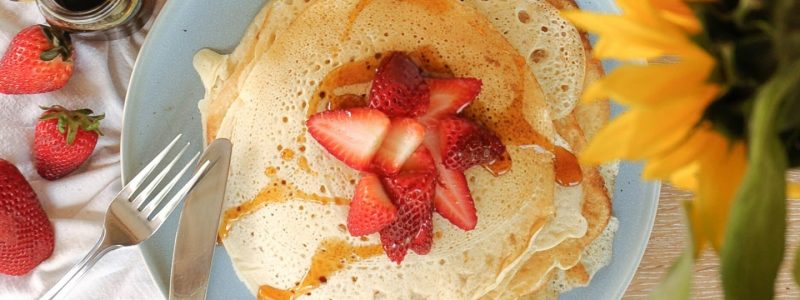This Gluten-Free Hi-Fibre Pancake Mix recipe offers a nutritious start to the day, perfect for health-conscious and dietary-restricted individuals. It’s vegan-friendly, and free from common allergens like gluten, wheat, soy, yeast, eggs, dairy, and nuts, ensuring it’s safe for nearly everyone without sacrificing taste. Made with wholegrain chickpea flour and resistant starches, it promises a delicious, high-fiber meal with just the addition of water. This mix is an effortless way to enjoy a wholesome, tasty breakfast that benefits the whole family.
To use the Gluten Free Hi-Fibre Pancake Mix, simply mix it with water or milk, let it rest for fluffier pancakes, and cook on a greased, medium-heated frypan. This easy process ensures delicious, golden brown pancakes that are both nutritious and allergy-friendly, making them a perfect breakfast option for the whole family.
How to make Gluten-Free Hi-Fibre Pancakes
1. Pre-heat frypan over medium heat and grease well.
2. Add 250g of mix to a shaker bottle (reused 2L milk bottle) or bowl.
3. Add 270mL of water or milk. Replace the lid and shake the bottle thoroughly for 2-3 minutes – open the lid carefully and release the air after 1 minute. If using a bowl, stir thoroughly for 2-3 minutes. For fluffier pancakes let the mixture rest for 15 minutes – add more water if the mixture becomes too thick.
4. Pour the pancake mixture into the pan to the desired size.
5. Cook over low to medium heat for approx. 2 minutes on each side or until golden brown.
Serve your Gluten Free Hi-Fibre Pancakes topped with fresh fruits, a dollop of yogurt, or a drizzle of maple syrup for a delightful and healthy breakfast. Additionally, for an extra nutrient boost, sprinkle on some seeds or nuts. This versatile base welcomes all your favorite toppings, making it a perfect meal to start your day with both taste and nutrition.
Purchasing unpackaged goods from bulk food stores, like Wasteless Pantry, significantly benefits the environment by minimizing packaging waste and reducing food waste. Furthermore, this shopping method encourages buying only what you need. Thereby promoting a healthier lifestyle through fresh, less processed ingredients. It’s a sustainable choice that supports a cleaner planet.

